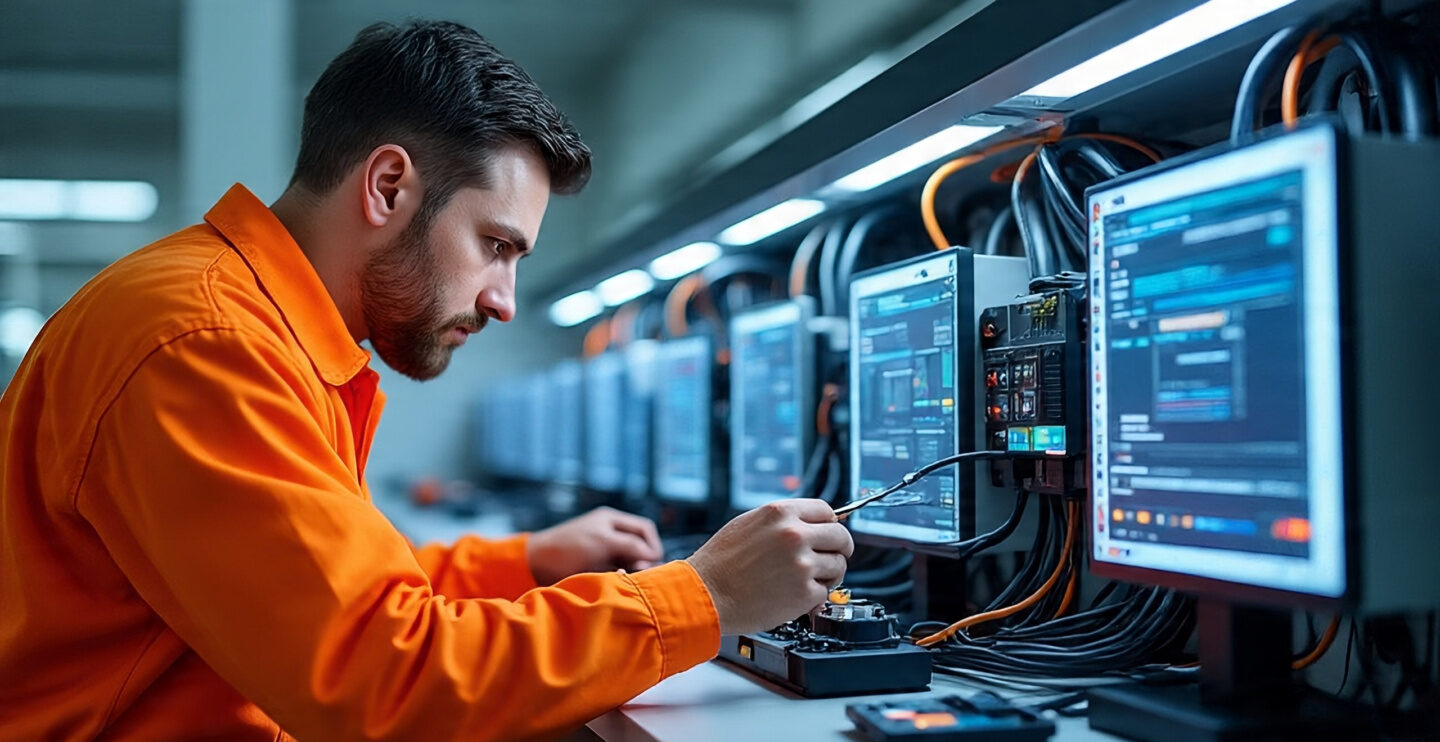The decision to buy Bitcoin mining rig equipment has never been more critical for cryptocurrency enthusiasts and investors looking to diversify their digital asset portfolios. With Bitcoin’s price volatility and increasing network difficulty, choosing the right mining hardware can mean the difference between profitable operations and financial losses. Whether you’re a complete beginner or an experienced crypto investor, understanding how to purchase the most suitable Bitcoin mining equipment requires careful research and strategic planning.
The cryptocurrency mining landscape has evolved dramatically since Bitcoin’s early days when individuals could mine using standard computer graphics cards. Today’s mining environment demands specialized Application-Specific Integrated Circuits (ASICs) designed exclusively for Bitcoin’s SHA-256 algorithm. When you decide to buy Bitcoin mining rig hardware, you’re investing in sophisticated technology that can generate passive income through block rewards and transaction fees, provided you make informed decisions about equipment selection, electricity costs, and operational setup.
What is a Bitcoin Mining Rig?
A Bitcoin mining rig represents a specialized computer system designed specifically for cryptocurrency mining operations. These powerful machines solve complex mathematical algorithms to validate transactions on the Bitcoin network, earning miners rewards in the form of newly minted Bitcoin and transaction fees.
Modern Bitcoin mining rigs consist of ASIC miners, which are purpose-built chips optimized for the SHA-256 hashing algorithm used by Bitcoin. Unlike general-purpose computers or graphics processing units (GPUs), ASIC miners offer superior efficiency and hash rates, making them the only viable option for profitable Bitcoin mining in today’s competitive environment.
Key Components of Mining Rigs
When you buy Bitcoin mining rig equipment, you’re essentially purchasing a complete system that includes the ASIC miner itself, power supply units, cooling systems, and monitoring software. High-end mining rigs can consume between 1,000 to 3,500 watts of electricity while producing hash rates ranging from 50 TH/s to over 100 TH/s.
The most successful mining operations combine multiple rigs in dedicated facilities with optimized power distribution, industrial cooling systems, and professional maintenance protocols. Understanding these components helps potential buyers make informed decisions about their mining investments.
Top Bitcoin Mining Rigs to Buy in 2025
Research and Planning Phase
Before making any purchases, conduct thorough research on current mining profitability, electricity costs in your area, and available space for equipment installation. Calculate potential returns using mining profitability calculators that factor in hash rate, power consumption, electricity costs, and current Bitcoin prices.
Determine your budget not just for the mining hardware, but also for supporting infrastructure including electrical work, cooling systems, internet connectivity, and ongoing maintenance costs. Professional mining operations typically allocate 20-30% of their equipment budget for infrastructure improvements.
Choosing Reputable Suppliers
When you decide to buy Bitcoin mining rig equipment, selecting trustworthy suppliers becomes crucial for avoiding counterfeit products and ensuring warranty coverage. Authorized distributors offer genuine products with manufacturer warranties, technical support, and reliable shipping services.
Research supplier reviews, verify business credentials, and confirm warranty terms before making purchases. Established suppliers often provide additional services including setup assistance, bulk pricing, and extended warranty options that can significantly impact your mining operation’s success.
Comparing Specifications and Pricing
Compare multiple mining rig options based on hash rate, power efficiency, noise levels, and total cost of ownership rather than just initial purchase price. Factor in electricity costs over the equipment’s expected lifespan, typically 2-4 years for ASIC miners operating in competitive environments.
Create detailed comparison charts that include specifications, pricing, availability, warranty terms, and shipping costs. This systematic approach helps identify the best value proposition for your specific situation and mining goals.
Finalizing Purchase and Delivery
Complete your purchase through secure payment methods that offer buyer protection, such as credit cards or established cryptocurrency payment processors. Avoid transactions that require full payment upfront without escrow services or guarantee mechanisms.
Coordinate delivery timing with your infrastructure preparation, ensuring electrical systems, cooling, and internet connectivity are ready before equipment arrival. Plan for immediate testing and configuration to maximize uptime and profitability from day one.
Bitcoin Mining Rig Setup and Installation

Electrical Requirements and Safety
Professional electrical installation forms the foundation of successful mining operations. Bitcoin mining rigs require dedicated circuits with appropriate amperage ratings, typically 220V connections for optimal efficiency. Consult licensed electricians to ensure code compliance, proper grounding, and adequate power distribution for your specific equipment.
Install appropriate circuit breakers, surge protection, and monitoring systems to protect your investment from power fluctuations and electrical issues. Many mining operations implement uninterruptible power supplies (UPS) systems to maintain operation during brief power outages and provide safe shutdown procedures.
Cooling and Ventilation Systems
Effective cooling directly impacts mining rig longevity and performance. ASIC miners generate significant heat during operation, requiring substantial airflow to maintain optimal operating temperatures. Design ventilation systems that provide adequate fresh air intake and efficient hot air exhaust.
Consider ambient temperatures, humidity levels, and seasonal variations when planning cooling infrastructure. Industrial fans, air conditioning systems, and specialized mining facility cooling solutions may be necessary depending on your operation’s scale and environmental conditions.
Network Configuration and Pool Setup
Configure reliable internet connectivity with sufficient bandwidth and low latency connections to mining pools. Establish redundant network connections when possible to minimize downtime that directly impacts mining revenue. Most mining rigs require minimal bandwidth but benefit from stable, consistent connections.
Select reputable mining pools based on fee structures, payout methods, and historical performance. Configure your mining rigs with backup pool settings to automatically switch during primary pool downtime or maintenance periods.
Mining Profitability and ROI Analysis
Calculating Mining Returns
Accurate profitability calculations require considering multiple variables including hash rate, power consumption, electricity costs, pool fees, and Bitcoin price volatility. Use conservative estimates for Bitcoin prices and factor in potential network difficulty increases that reduce mining rewards over time.
Professional miners typically plan for 12-24 month payback periods, though actual returns vary significantly based on market conditions and operational efficiency. Regular profitability reviews help optimize operations and make informed decisions about equipment upgrades or expansions.
Managing Operational Costs
Electricity costs typically represent 60-80% of mining operational expenses, making power cost optimization crucial for profitability. Negotiate better electricity rates, consider renewable energy sources, or relocate operations to areas with lower power costs to improve margins.
Factor in maintenance costs, replacement parts, labor for monitoring and maintenance, insurance, and facility costs when calculating total operational expenses. Successful mining operations maintain detailed cost tracking to identify optimization opportunities.
Where to Buy Bitcoin Mining Rig Equipment
Authorized Distributors and Manufacturers
Purchase directly from manufacturers like Bitmain, MicroBT, and Canaan when possible to ensure authentic products and full warranty coverage. Authorized distributors offer additional benefits including local support, faster shipping, and sometimes better pricing through volume relationships.
Verify distributor authorization status through manufacturer websites and avoid unauthorized resellers that may sell counterfeit or modified equipment without warranty coverage.
Online Marketplaces and Considerations
While online marketplaces offer competitive pricing and equipment availability, exercise extreme caution when purchasing expensive mining equipment. Verify seller ratings, return policies, and buyer protection programs before making purchases.
Consider escrow services for high-value transactions and thoroughly inspect equipment upon delivery to identify potential issues before acceptance. Document everything for potential warranty claims or dispute resolution.
Local Dealers and Service Providers
Local dealers often provide valuable services including setup assistance, ongoing maintenance support, and rapid response for technical issues. While pricing may be higher than online options, local support can significantly improve operational success rates.
Build relationships with local dealers who understand your market conditions and can provide customized solutions for your mining operation’s specific requirements.
Common Mistakes When Buying Mining Rigs
Underestimating Total Costs
Many new miners focus exclusively on equipment purchase prices while underestimating infrastructure costs, ongoing operational expenses, and maintenance requirements. Create comprehensive budgets that include all associated costs for realistic profitability projections.
Factor in costs for electrical upgrades, cooling systems, monitoring equipment, insurance, and potential facility modifications required for safe and efficient mining operations.
Ignoring Electricity Costs
Electricity costs directly determine mining profitability, yet many buyers fail to accurately calculate power expenses before equipment purchases. Research local electricity rates, demand charges, and potential rate increases that could impact long-term profitability.
Consider time-of-use rates, renewable energy options, and efficiency improvements that can reduce operational costs and improve mining margins.
Buying Outdated Equipment
Purchasing older generation mining equipment may seem cost-effective initially but often results in poor profitability due to higher power consumption and lower hash rates. Evaluate total cost of ownership rather than just initial purchase prices.
Stay informed about upcoming equipment releases that may significantly impact the value and competitiveness of current generation hardware.
Maintenance and Troubleshooting

Regular Maintenance Schedules
Implement systematic maintenance programs that include regular cleaning, firmware updates, and performance monitoring to maximize equipment lifespan and operational efficiency. Clean dust buildup from heat sinks and fans monthly to prevent overheating issues.
Monitor performance metrics including hash rate, temperature, and error rates to identify potential issues before they cause equipment failures or extended downtime.
Common Issues and Solutions
Familiarize yourself with common mining rig problems including overheating, connectivity issues, and hash rate degradation. Maintain spare parts inventory including fans, power supplies, and control boards for rapid repair capabilities.
Develop troubleshooting procedures and maintain relationships with technical support resources to minimize downtime during equipment issues.
Warranty and Support Services
Understand warranty terms, coverage limitations, and claim procedures before equipment failures occur. Maintain detailed operational records that may be required for warranty claims or technical support requests.
Consider extended warranty options and professional maintenance contracts for large-scale mining operations where downtime costs exceed service contract expenses.
Future of Bitcoin Mining Hardware
Technological Advancements
Monitor emerging technologies including next-generation chip architectures, improved cooling solutions, and energy efficiency improvements that may impact future mining rig selection decisions.
Stay informed about industry developments through mining forums, manufacturer announcements, and professional mining publications to make timely equipment upgrade decisions.
Environmental Considerations
Energy Consumption Impact
Bitcoin mining’s energy consumption continues to generate environmental discussions, influencing regulatory approaches and operational strategies. Consider renewable energy sources and carbon offset programs to address environmental concerns while maintaining profitability.
Research local renewable energy options including solar, wind, and hydroelectric power that may provide cost-effective and environmentally responsible power sources for mining operations.
Legal and Regulatory Considerations
Local Mining Regulations
Research local regulations regarding cryptocurrency mining operations, including zoning restrictions, noise ordinances, and electrical code requirements that may impact your mining setup.
Stay informed about evolving regulatory frameworks that may affect mining operations, equipment imports, and cryptocurrency taxation in your jurisdiction.
Conclusion
The decision to buy Bitcoin mining rig equipment represents a significant investment opportunity that requires careful planning, thorough research, and strategic execution. Success in Bitcoin mining depends not just on purchasing the right hardware, but on understanding total operational costs, maintaining equipment properly, and adapting to changing market conditions.
Whether you’re starting with a single mining rig or planning a large-scale operation, focus on reputable suppliers, comprehensive cost analysis, and sustainable operational practices. The cryptocurrency mining industry continues evolving rapidly, making ongoing education and strategic flexibility essential for long-term success.
Read More: Best Bitcoin Mining Machines 2025 Top ASIC Miners Reviewed



